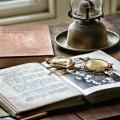THIS postcard shared by David Howard shows the Rose and Chequers, known at this period as Culling’s Hotel, after John Culling who was its landlord from about 1896 until 1946.
The Rose and Chequers is listed in the Universal Directory of 1793 and the landlord then was Alexander Banks. That name occurs repeatedly in Andover’s history under various occupations – brick burner, glover, carpenter and farmer, as well as innholder, yeoman and gent; no doubt they were all related, perhaps directly so, and it shows how fortunes can wax and wane.
Innkeeper Alexander was likely grandfather to Thomas Alexander Banks who owned the Rose and Chequers in the 1850s, and whose widowed mother Elizabeth had run the inn during the previous decade.
However, the landlord in 1830 was James Povey, so the chain of licensees was not always a family one, though Povey was probably a tenant. Directories always name the current landlord, irrespective of whether they are the owner of the premises.
Bert Earney surmises in Inns of Andover that it briefly became the Market Inn under Thomas Alexander Banks; an 1857 notice in the Andover Monthly Advertiser declared that pens for the sale of pigs had been erected ‘in his spacious yard which is open to dealers and others free of toll’.
A year later Banks and his wife Emma were arrested, being jointly accused of the murder of William Parsons.
READ MORE: A Victorian murder at the Railway Tavern that rocked Andover
The couple spent the months before their expected trial in Winchester prison before being released for lack of evidence on the order of the presiding judge. At the time of the murder, the landlord of the Rose and Chequers was one John Young who seems to have done all he could to get Banks convicted. Despite this, Young was still listed as the landlord in the 1861 census.
The Rose and Chequers remained in the possession of the Banks family, during which there was a succession of landlords. Walter Newman who had been at the Black Swan (see the Advertiser for 31 December 2021) was there in 1895 just before being taken over by John Culling who revitalised the inn.
Mr Earney tells us that he was an excellent caterer who organised the annual mayor’s banquet at the Guildhall for many years and was also a dance enthusiast, building the Waverley Hall in the adjoining yard for that purpose before it became a British Restaurant during World War II. Many in Andover will of course remember the Waverley Hall as the photographic studios of David Facey. The hotel also regularly provided changing facilities for the opposing team playing at Andover F C’s home ground, the Walled Meadow.
SEE ALSO: Secret tunnels under Andover streets
Although Culling took over in 1896, it was not re-named Culling’s Hotel until after 1911. By then, another Thomas Alexander Banks owned the building. He was the eldest son of the man accused of murder and was actually born in Winchester prison in 1859. A Longparish farmer, he sold the inn to Strong and Co of Romsey in 1920, who kept John Culling as landlord. Incidentally, the photograph shows the badge of the Cyclists Touring Club (CTC) on its front wall, an award given by the club’s members to show that the hotel accommodation was approved and recommended.
The final demise came in 1971 when Strong’s sold the building to Halfords who demolished the hotel and built a shop on the site.
Message from the editor
Thank you for reading this story. We really appreciate your support.
Please help us to continue bringing you all the trusted news from Andover by sharing this story or by following our Facebook page, click this link and hit like.
Kimberley Barber






Comments: Our rules
We want our comments to be a lively and valuable part of our community - a place where readers can debate and engage with the most important local issues. The ability to comment on our stories is a privilege, not a right, however, and that privilege may be withdrawn if it is abused or misused.
Please report any comments that break our rules.
Read the rules here